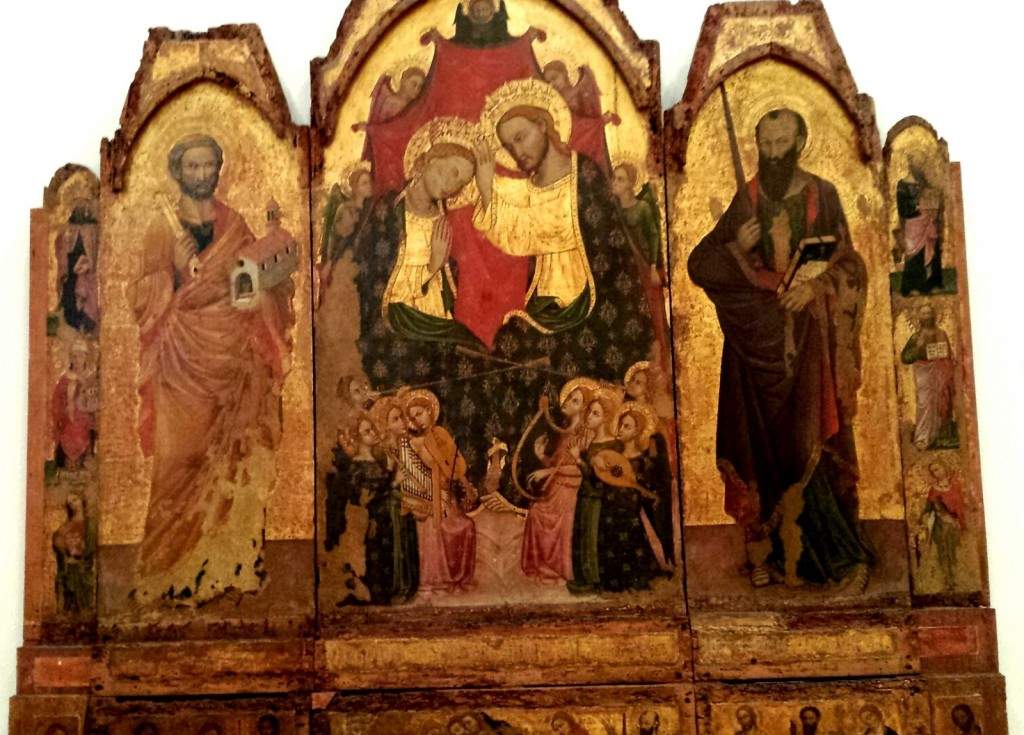The start of the restoration of a 15th-century triptych located in the storerooms of the Regional Gallery of Palazzo Abatellis will be streamed live: the operation kicks off on Saturday, February 6, starting at 5 p.m., on the museum’s Facebook page. The restoration will be supervised by one of Sicily’s leading experts, Franco Fazzio, a specialist in medieval panel painting, but who in the past has also tried his hand at other important interventions (he took part, for example, in the campaign of diagnostic investigations on Caravaggio’s Seppellimento di santa Lucia preserved in Syracuse). Art historians Evelina De Castro (director of the Regional Gallery of Palazzo Abatellis) and Valeria Sola were in charge of the work.
The project includes the restoration of the work and the recovery of its legible condition. The triptych depicts in the central compartment aCoronation of the Virgin and on the sides Saints Peter and Paul, while other saints decorate the pillars. On the predella, there is a Pieta. The triptych comes from the church of St. Peter La Bagnara: this is the church of the abbey of the same name founded in the 11th century and demolished in 1834. Several of the works that were inside it ended up in the very deposits of the Regional Gallery, and the triptych is still there today. For the triptych, which dates back to the early 15th century, this is not the first restoration: it had already undergone an intervention in 1953, on the occasion of the exhibition on Antonello da Messina in whose itinerary the work was supposed to appear, although it was later not chosen. After the restoration that will start on Saturday, the work will come out of storage and will be available in the permanent exhibition, and in particular in Room VIII, where medieval polyptychs are shown to the public.
The intervention on the triptych is made possible thanks to Art Bonus funds, made available by two private donors, Annibale and Marida Berlingieri, art collectors, who availed themselves of the possibility offered by DL 83 of May 31, 2014 (converted by Law No. 106/2014), which encourages liberal donations in support of culture.
“I applaud the initiative of Mr. and Mrs. Berlingieri who, through their intervention, have shown that they are using their resources in the interest of culture and the community,” said Regional Councillor for Cultural Heritage Alberto Samonà. “Thanks to the Art bonus we can all become patrons and help save a piece of our history and culture by concretely supporting the preservation of cultural heritage. Those who make liberal cash disbursements to support culture, as provided by law, are able to enjoy important tax benefits in the form of tax credits and make a gift to the community. I hope that this good practice can increasingly take the field and become one of the ways through which more and more works of art can be recovered for public enjoyment.”
“The identification of the Triptych of San Pietro la Bagnara, to the recovery of which to allocate the Art bonus,” says Evelina De Castro, director of Palazzo Abatellis, “found agreement with the Marchesi Berlingeri, who shared our intent to renew attention to one of the most articulated, when Palermo was a meeting point of painting coming from Italian centers of production, such as Florence, Pisa and Genoa, with the presences of works and artists from the Mediterranean sphere, such as Iberian and Provençal, giving rise to a variety well evidenced by the paintings on a gold background exhibited in the rooms of Palazzo Abatellis to precede the clear Renaissance turn.”
Pictured is the Triptych. Ph. A. Gaetani
 |
| Palermo, 15th century triptych from Palazzo Abatellis restored live streamed |
Warning: the translation into English of the original Italian article was created using automatic tools. We undertake to review all articles, but we do not guarantee the total absence of inaccuracies in the translation due to the program. You can find the original by clicking on the ITA button. If you find any mistake,please contact us.